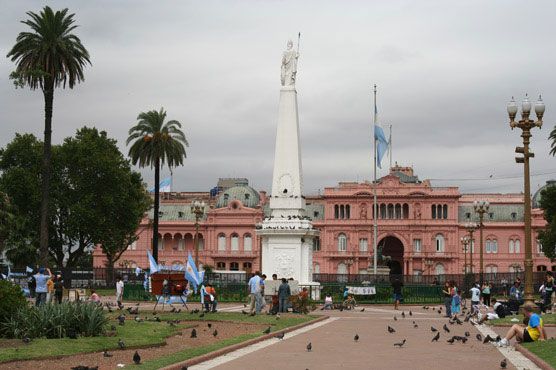|
Buenos Aires, meaning good air, is the largest city in Argentina and also serves as the capital of the country. Buenos Aires a high energy city with strong European ties is a port city located on the southern shore of the Rio de la Plata bordering Uruguay. Situated on the southeastern coast of South America, Buenos Aires is the continents third largest metropolitan area. Located in the Pampas Region of Argentina, Buenos Aires is geographically bordered by the Rio de la Plata to the east northeast, by the river Riachuelo to the southeast and Avenida General Paz separating the city from the Province of Buenos Aires to the west.
Spanish explorer Juan Diaz de Solis was the first European to land in what is now Buenos Aires in the year 1516, it was not till Pedro de Mendoza’s arrival in 1536 that the city of Buenos Aires was established in what today is called the San Telmo district. Long ignored by Spain, Buenos Aires became known for its contraband trade in retaliation to Spain’s demand that all trade to Europe must pass through Lima Peru. During the years 1806 and 1807 the British attacked Buenos Aires twice, both times being fought back by local militias. On May 25 1810 (May Revolution), the people of Buenos Aires demanded the resignation of the Spanish Viceroy, thus leading to full independence from Spain in 1816. Once part of the Buenos Aires province, Buenos Aires was federalized in 1880 becoming the capital city of Argentina.
 During the 1920’s, Buenos Aires saw a large influx of European immigrants migrate to the city, swelling the population from 1.5 million people in 1914 to over 3 million people by 1935. With a large concentration of Italian and German descendants, Buenos Aires took on the look and feel of a European city. The city’s architecture as well as the lifestyle and culture of Portenos (as locals are called) are quite different than the rest of South America. Today, almost 13 million people live in 48 barrios making up the metropolitan area of Buenos Aires. Large glass wall skyscrapers share the skyline with old world architecture, busy avenues give way to small quaint neighborhoods with cobble stone streets lined with small cafes. During the 1920’s, Buenos Aires saw a large influx of European immigrants migrate to the city, swelling the population from 1.5 million people in 1914 to over 3 million people by 1935. With a large concentration of Italian and German descendants, Buenos Aires took on the look and feel of a European city. The city’s architecture as well as the lifestyle and culture of Portenos (as locals are called) are quite different than the rest of South America. Today, almost 13 million people live in 48 barrios making up the metropolitan area of Buenos Aires. Large glass wall skyscrapers share the skyline with old world architecture, busy avenues give way to small quaint neighborhoods with cobble stone streets lined with small cafes.
Argentina’s main hub for industry, finance and culture is in Buenos Aires, to the west of the city in the Humid Pampas region, is the country’s most productive agriculture region. Buenos Aires is also known for its chemicals, automobile manufacturing and oil refining industries.
Buenos Aires sitting on the southeast coast of South America has a humid subtropical climate. With annual rainfall around 45 inches and temperatures ranging from high 50’s during the winter months and high 80’s during the summer months.
|